5 Condensation Management Tips to Keep Your Decanter Centrifuge Running
Humidity, moisture, and condensation can lead to corrosion and rust.
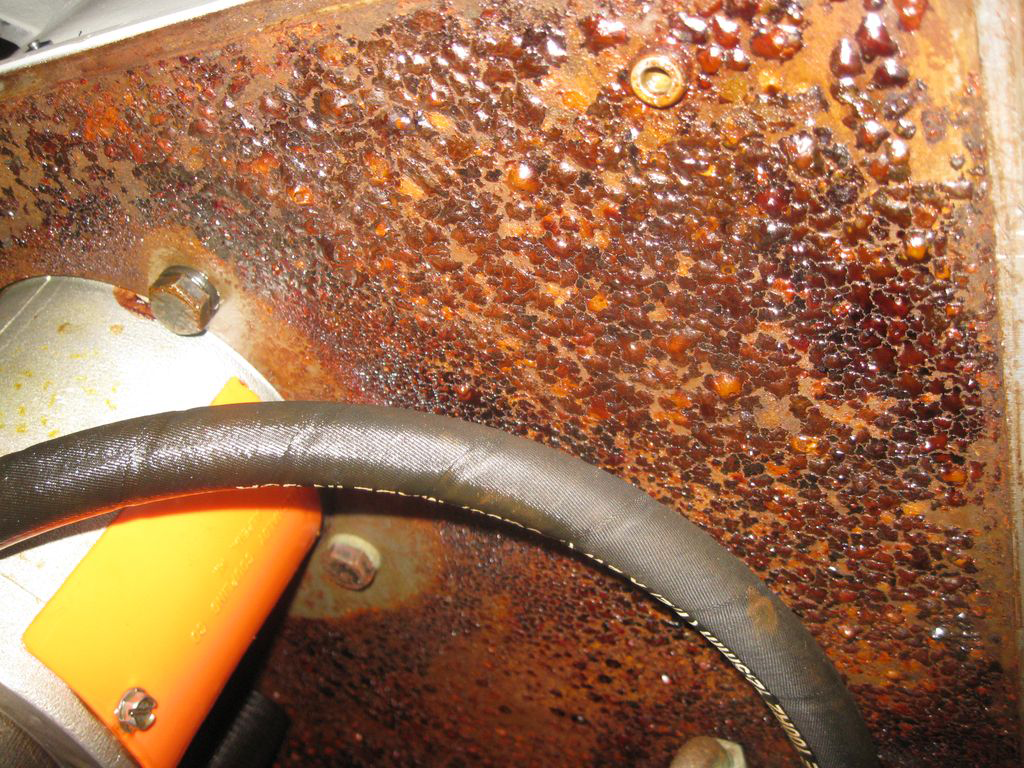
With summer just around the corner, decanter centrifuge operators should be extra cautious of sudden temperature fluctuations. The cooler evening temperatures that change to warmer day temperatures require more frequent inspections of a decanter centrifuge to control moisture and condensation build-up. Excessive humidity leads to condensation which can cause corrosion and rust on the centrifuge and its parts.
Think of a cold glass of water outside on a sunny, warm day – condensation forms on the glass very quickly. Your centrifuge is like that glass of water. If a centrifuge is located outside and not operating during the nighttime hours or close to an open door or window, even for just a few minutes, moisture can develop on both the external and the internal parts of the centrifuge.
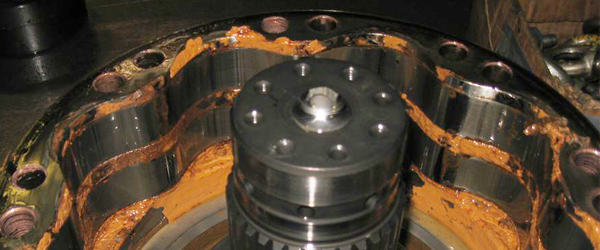
Why do moisture and condensation form on a decanter centrifuge?
Warm air carries more water. Think of summer with high humidity. When the warm air cools down at night, the water is released from the air and creates condensation, just like dew on the grass.
What happens to the centrifuge and its components when moisture and condensation are present?
Rust. A majority of centrifuge parts in contact with feed or process fluids are manufactured with stainless steel. Stainless steel does not rust. But certain carbon steel manufactured parts are lubricated and can oxidize (rust) if exposed to moisture and condensation. Carbon steel components are found in centrifuge gearboxes, bearings, lube systems, and hydraulic systems. Moisture can also settle in centrifuge oil tanks and motors.
If a decanter centrifuge operates 24/7, moisture release is minimized. If the centrifuge is not operated at night, the moisture from the air is released because of the lower temperatures. Condensation will form on the centrifuge during this time.
What do I do if I see moisture or condensation on the centrifuge and its components?
Nothing. If you see condensation on the outside of the centrifuge, you need to be aware that condensation is present on the inside of the centrifuge.
Are there applications that increase the moisture or condensation on the centrifuge and its components?
Yes. High-temperature applications increase condensation from steam. Process steam accumulation can affect the centrifuge and ancillary parts and accelerate corrosion damage. For applications using process steam, it is important to isolate the centrifuge from the steam when it is not in operation.
5 Maintenance Tips to Prevent Moisture, Condensation, and Corrosion on a Decanter Centrifuge
The following five tips will help to prevent moisture and condensation build-up in the decanter centrifuge.
1. Operate the decanter centrifuge once a week, even to simply start the centrifuge up and then shut the centrifuge back down.
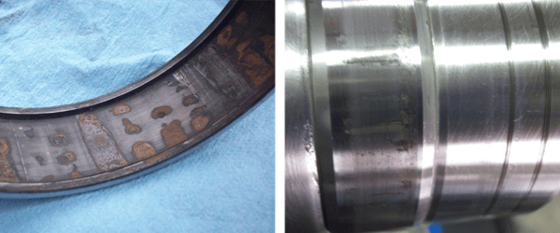
This bearing race is corroded from a centrifuge sitting at standstill too long.
- If you are unable to run the decanter centrifuge, rotate the centrifuge bowl by hand a few times once a week. This allows the lubricant to coat the bearing rolling elements. This prevents contact corrosion which leads to noise and premature bearing failure.
- Never store the centrifuge with the rotating assembly transport hold-down brackets (located on the main pillow blocks) in the lock position. The locked transport hold-down brackets push the bearing rollers through the lubricant film and cause condensation and contact corrosion.
- Before shutting down the centrifuge for an extended period of time, extensively lubricate all rotating parts, like the bearings. The grease fills crevices and prevents moisture from forming inside the centrifuge.
2. Before operating the centrifuge, check all tanks and gearbox fluid drains, especially if the centrifuge has not operated for an extended period of time.
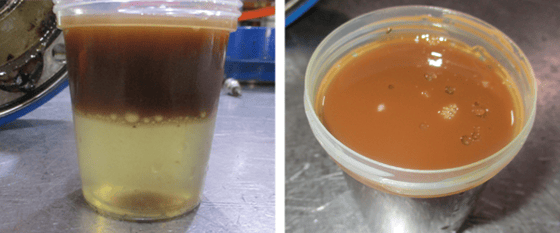
LEFT: Oil and water drained from a gearbox. RIGHT: An example of emulsified oil and water.
- Drain any standing water that is collected on the bottom of the gearbox or hydraulic tank drain.
- Drain all of the lines and any piping where water can collect.
- Take a small oil sample from the hydraulic tank or gearbox drain. If the sample is not clear or water is present, change the oil immediately. If water is present in the oil (water separates to the bottom as shown in the above, left image) drain the water off immediately. Operate or rotate the gearbox briefly to coat the internal parts with oil. Do NOT run the centrifuge with water in the oil. When water and oil mix, an emulsion is formed. The emulsion separates under centrifugal force and damages the hydraulic and gearbox motors.
- Electric motors also have condensation drains. Some motor manufacturers recommend that outdoor motors are equipped with heaters year-round. The heaters should be powered on whenever the motor is not running and the centrifuge is still connected to power to keep the motor at a consistent temperature. This prevents condensation from forming inside the motor.
3. Protect the decanter centrifuge from natural environmental elements.
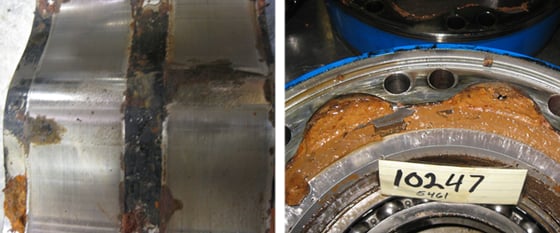
Moisture damaged the cam-housing on this ROTODIFF hydraulic motor with rust on the outside (left) and rust in the oil (right).
- Use a tent or a temporary building for outdoor or mobile centrifuges. A tent or temporary structure can protect the centrifuge from inclement weather.
- When transporting a decanter centrifuge, cover the centrifuge with a heavy tarp. Transporting a centrifuge through the rain at 65 miles per hour is equal to hurricane-force winds. Water will find a way into the centrifuge and its components if left unprotected.
4. Inspect all areas where water can collect on the decanter centrifuge.
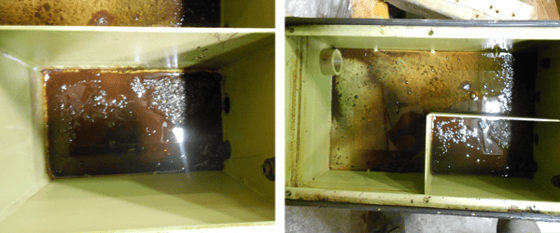
Standing water in the lube system tank.
- Check the oil reservoirs at a minimum once a month for moisture depending on the temperature fluctuations. This includes gearboxes, the lube, and the hydraulic systems. Drastic temperature and humidity fluctuations will cause condensation, no matter how well the components are sealed.
5. If condensation is visible on the outside of any centrifuge component, it is safe to assume that condensation is also on the inside.
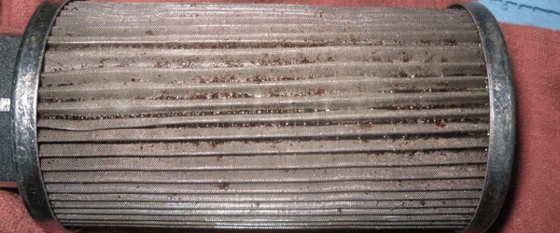
Rust on the suction strainer located inside the hydraulic pump tank.
- When rust is visible on the hydraulic pump tank suction strainer, it is best to replace the suction strainer. Our “7 Tips to Maintain a Decanter Centrifuge Hydraulic Pump” post provides helpful steps to keep the centrifuge hydraulic pump performing properly.
- Inspect other centrifuge assembly steel parts for moisture damage, including machined mounting surfaces or exposed piping and conduit threads. Remove any loose rust and use a commercial rust inhibitor spray to coat these areas.
- Having a centrifuge spare parts inventory at your plant saves time and money. Our “What Decanter Centrifuge Spare Parts Should You Keep On Hand” blog helps you decide which parts help avoid unnecessary standstill if you need to replace parts because of moisture or corrosion.
Do you have more questions on moisture, condensation, or corrosion on your Centrisys dewatering centrifuge? Centrisys/CNP’s experienced service technicians are always available. Contact the experts at Centrisys/CNP today.
